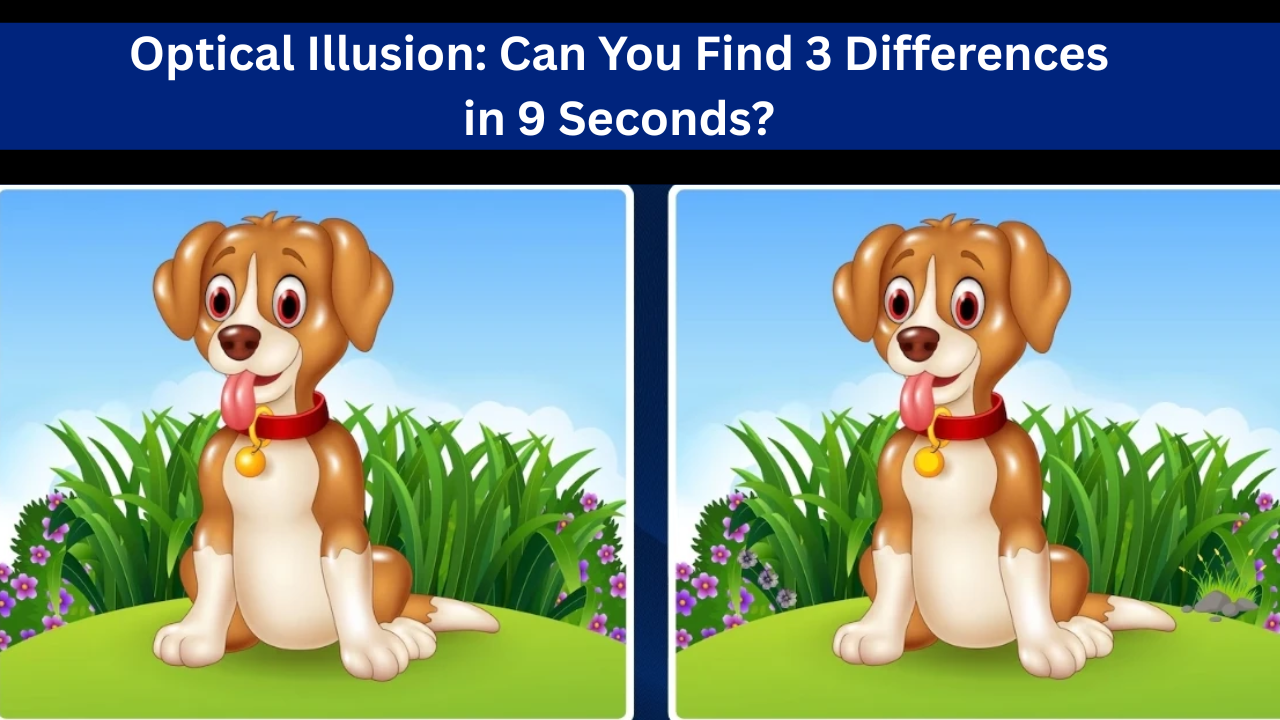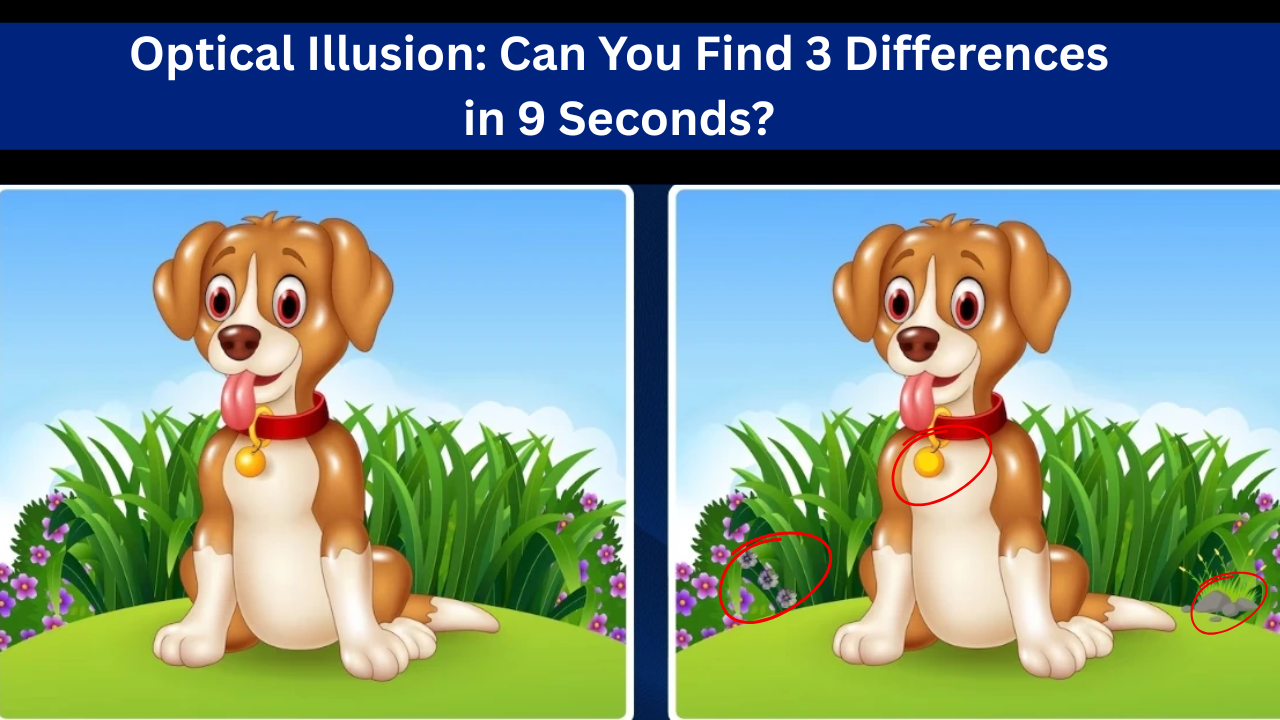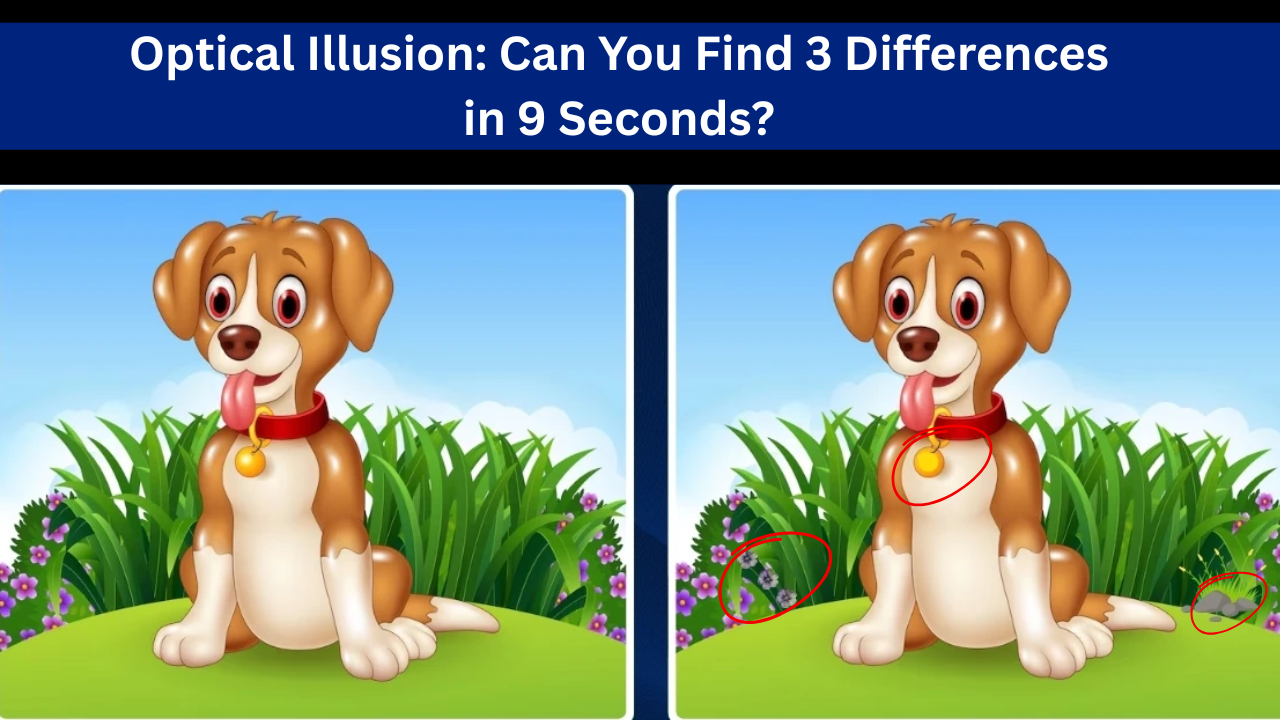Optical illusions have long fascinated people of all ages, challenging our perception and testing our attention to detail. One of the most popular forms of optical illusions is the “spot the difference” puzzle, where participants must identify subtle variations between two seemingly identical images. In this article, we dive into the intriguing world of optical illusions with a specific challenge: Can you find 3 differences in 9 seconds? This engaging puzzle not only entertains but also sharpens cognitive skills, enhances focus, and provides a fun way to exercise your brain. We’ll explore the science behind optical illusions, tips for solving spot-the-difference puzzles, and the benefits of engaging with such brain teasers. While we won’t provide a specific image here, we’ll guide you through the process of tackling this challenge and understanding why these puzzles captivate millions worldwide.
What Are Optical Illusions?
Optical illusions are visual phenomena that trick the brain into perceiving something different from reality. They exploit the way our eyes and brain process visual information, often creating confusion between what we see and what is actually present. Spot-the-difference puzzles are a subset of optical illusions, designed to test observation skills by presenting two images with minor discrepancies. These differences might include changes in color, shape, position, or the addition or removal of objects.
The “Can You Find 3 Differences in 9 Seconds?” challenge is a fast-paced version of this classic puzzle. The time constraint adds an extra layer of difficulty, requiring quick thinking and sharp visual acuity. Such puzzles are popular in magazines, online games, and social media challenges, where participants compete to spot differences under pressure. Let’s break down why these puzzles are so captivating and how you can excel at them.

The Science Behind Spot-the-Difference Puzzles
Spot-the-difference puzzles engage multiple cognitive processes, making them more than just a fun pastime. Here’s how they work on a neurological level:
-
Visual Perception: When you look at two images, your brain processes visual information through the visual cortex. It compares shapes, colors, and patterns to identify discrepancies. Optical illusions exploit the brain’s tendency to fill in gaps or make assumptions, which can make spotting differences challenging.
-
Attention to Detail: These puzzles require sustained focus and attention to subtle details. The brain must filter out irrelevant information and zero in on specific changes, a skill known as selective attention.
-
Working Memory: To find differences, you need to hold the details of one image in your mind while comparing it to the other. This engages short-term memory and enhances cognitive flexibility.
-
Speed and Pressure: The 9-second time limit activates the brain’s stress response, increasing adrenaline and sharpening focus. However, it can also lead to mistakes if you rush without a strategy.
Research suggests that engaging in visual puzzles like spot-the-difference games can improve cognitive functions, including memory, concentration, and problem-solving skills. They also stimulate the prefrontal cortex, which is responsible for decision-making and critical thinking.
Why Only 9 Seconds?
The 9-second time limit in this optical illusion challenge is designed to test your ability to process information quickly. According to cognitive psychology, the human brain can process visual information in milliseconds, but identifying subtle differences under time pressure requires heightened focus. The short timeframe mimics real-world scenarios where quick decision-making is essential, such as driving or multitasking in a fast-paced environment.
The 9-second limit also makes the challenge more exciting. It creates a sense of urgency, turning a simple puzzle into a thrilling race against the clock. Whether you’re competing with friends or testing yourself, the pressure to find all three differences in such a short time adds an element of fun and intensity.
How to Solve the “Find 3 Differences in 9 Seconds” Challenge
While we can’t provide a specific image here, we can offer a step-by-step strategy to help you tackle any spot-the-difference puzzle effectively, even under a tight 9-second deadline. Follow these tips to improve your chances of success:
1. Scan Systematically
Instead of looking at the images randomly, divide them into sections (e.g., top-left, top-right, bottom-left, bottom-right). Scan each section methodically to ensure you cover the entire image. This approach prevents you from missing differences hidden in less obvious areas.
2. Focus on Key Elements
Pay attention to prominent objects, shapes, or patterns in the images. Differences are often subtle changes to these elements, such as:
-
A missing button on a shirt.
-
A different color on an object.
-
A shifted position of an item.
-
An added or removed detail, like a leaf or a shadow.
3. Use Peripheral Vision
Your peripheral vision can help you detect anomalies without focusing on every detail. Let your eyes sweep across both images simultaneously to catch anything that feels “off.”
4. Look for Common Difference Types
Spot-the-difference puzzles often include specific types of changes. Common differences include:
-
Color Variations: One object might be a different shade or hue.
-
Size or Shape Changes: An item may be slightly larger, smaller, or altered in shape.
-
Missing or Added Objects: A small detail, like a flower or a pen, might be present in one image but not the other.
-
Position Shifts: An object might be moved slightly to the left, right, up, or down.
-
Pattern Disruptions: Stripes, dots, or other patterns may have irregularities.
5. Practice Under Pressure
To prepare for the 9-second challenge, practice with similar puzzles and set a timer. The more you train your brain to spot differences quickly, the better you’ll perform under time constraints.
6. Stay Calm
The time pressure can be overwhelming, but panicking reduces your accuracy. Take a deep breath, focus, and trust your instincts. Even if you don’t find all three differences in 9 seconds, you can still enjoy the process and improve with practice.
Benefits of Solving Optical Illusion Puzzles
Engaging in spot-the-difference puzzles offers numerous cognitive and emotional benefits. Here are some reasons to make these challenges a regular part of your routine:
-
Improved Observation Skills: Regularly solving these puzzles trains your brain to notice subtle details, a skill that can translate to real-world tasks like proofreading or analyzing data.
-
Enhanced Concentration: The need to focus on small differences strengthens your ability to concentrate, even in distracting environments.
-
Boosted Cognitive Function: Optical illusions stimulate brain activity, potentially reducing the risk of cognitive decline as you age. Studies suggest that brain teasers can improve memory and mental agility.
-
Stress Relief: While the 9-second time limit adds excitement, solving puzzles can also be relaxing. The sense of accomplishment from finding differences boosts dopamine levels, enhancing your mood.
-
Fun for All Ages: Spot-the-difference puzzles are accessible to children, adults, and seniors, making them a great activity for families or social gatherings.
-
Sharpened Problem-Solving Skills: Identifying differences requires logical thinking and pattern recognition, skills that are valuable in academic, professional, and personal settings.
Where to Find Spot-the-Difference Puzzles
If you’re eager to try the “Find 3 Differences in 9 Seconds” challenge, there are plenty of resources available:
-
Online Platforms: Websites like PuzzlePrime, BrainDen, and CoolMathGames offer free spot-the-difference puzzles with varying difficulty levels. Many include timers to simulate the 9-second challenge.
-
Mobile Apps: Apps like “Find the Difference” and “Hidden Objects” on iOS and Android provide thousands of puzzles with time-based challenges.
-
Social Media: Platforms like X often feature viral optical illusion challenges. Search for hashtags like #SpotTheDifference or #OpticalIllusion to find user-generated puzzles.
-
Books and Magazines: Puzzle books and children’s magazines frequently include spot-the-difference games, often with colorful and engaging images.
-
DIY Puzzles: Create your own by editing a photo with subtle changes using image-editing software like Photoshop or Canva. Share them with friends for a personalized challenge.
Common Challenges and How to Overcome Them
Even seasoned puzzle enthusiasts can struggle with spot-the-difference games, especially under a 9-second time limit. Here are some common obstacles and solutions:
-
Missing Obvious Differences: If you’re overlooking differences, slow down slightly and focus on one section at a time. Obvious differences are often hidden in plain sight.
-
Time Pressure: Practice with shorter time limits (e.g., 15 seconds, then 12 seconds) to build speed without sacrificing accuracy.
-
Distractions: Solve puzzles in a quiet environment to maintain focus. If you’re easily distracted, use noise-canceling headphones or dim the lights to reduce visual noise.
-
Fatigue: If your eyes feel strained, take breaks between puzzles. Staring at screens for too long can reduce your ability to spot differences.

Fun Facts About Optical Illusions
To add some context to your puzzle-solving adventure, here are a few fascinating facts about optical illusions:
-
Historical Roots: Optical illusions have been studied since ancient Greece, where philosophers like Aristotle noted how the brain misinterprets visual information.
-
Cultural Variations: Different cultures perceive illusions differently due to variations in visual processing. For example, people in urban environments may notice details faster than those in rural settings.
-
Illusions in Art: Artists like M.C. Escher used optical illusions to create mind-bending artwork that challenges our understanding of perspective and reality.
-
Brain Training: Optical illusions are used in cognitive therapy to help patients with brain injuries or neurological disorders improve their visual processing skills.
In Summary
The “Can You Find 3 Differences in 9 Seconds?” optical illusion challenge is more than just a fun game—it’s a powerful tool to sharpen your mind, boost your observation skills, and enjoy a quick mental workout. By understanding the science behind these puzzles and applying strategic techniques, you can improve your ability to spot differences under pressure. Whether you’re competing against the clock or solving puzzles for relaxation, this challenge offers a unique blend of entertainment and cognitive benefits. So, grab a puzzle, set a 9-second timer, and test your skills! Can you find all three differences? Share your results with friends or on social media to keep the fun going. For more brain teasers and optical illusions, explore online platforms, apps, or puzzle books, and keep your mind sharp in 2025 and beyond.

